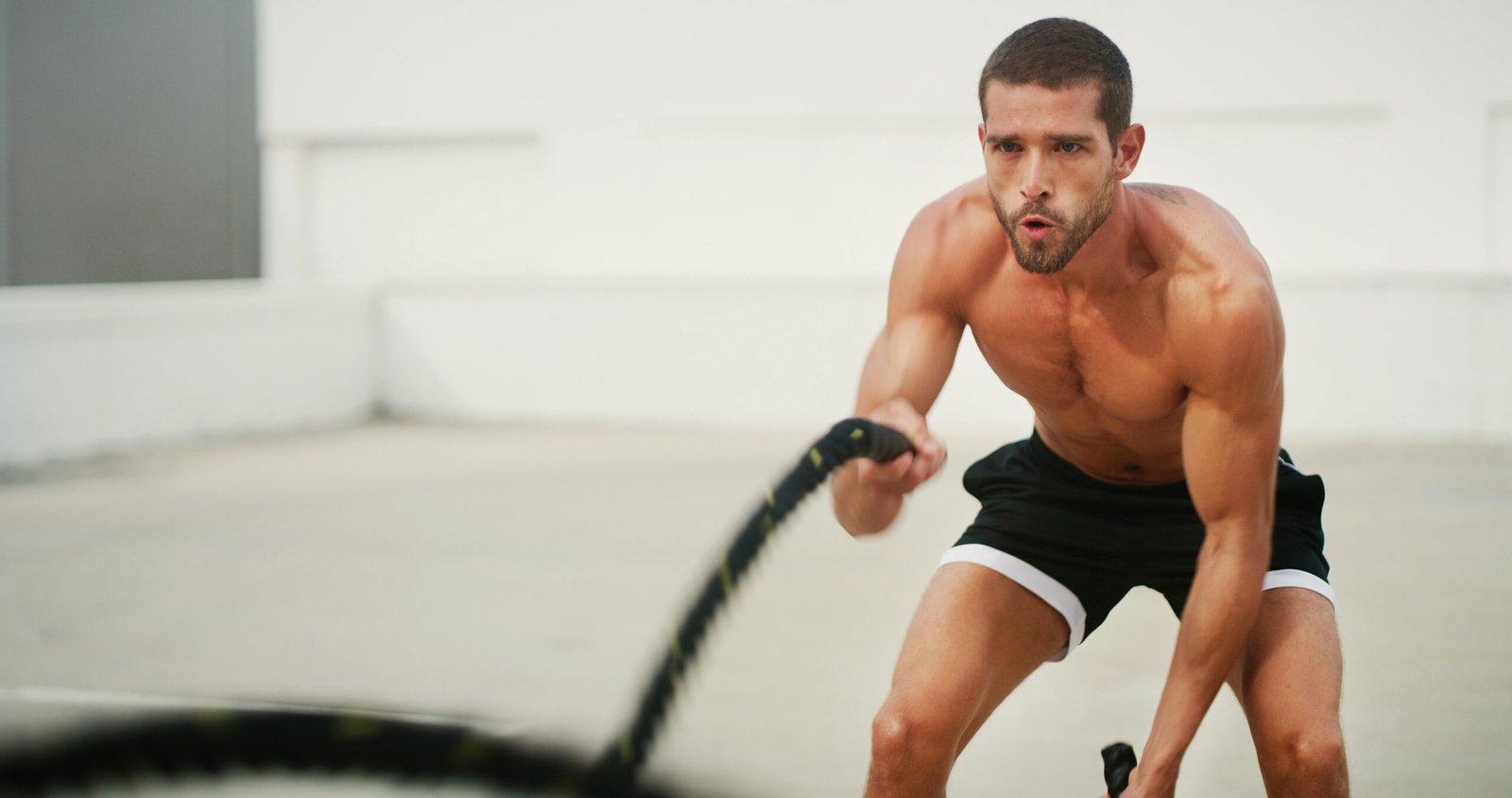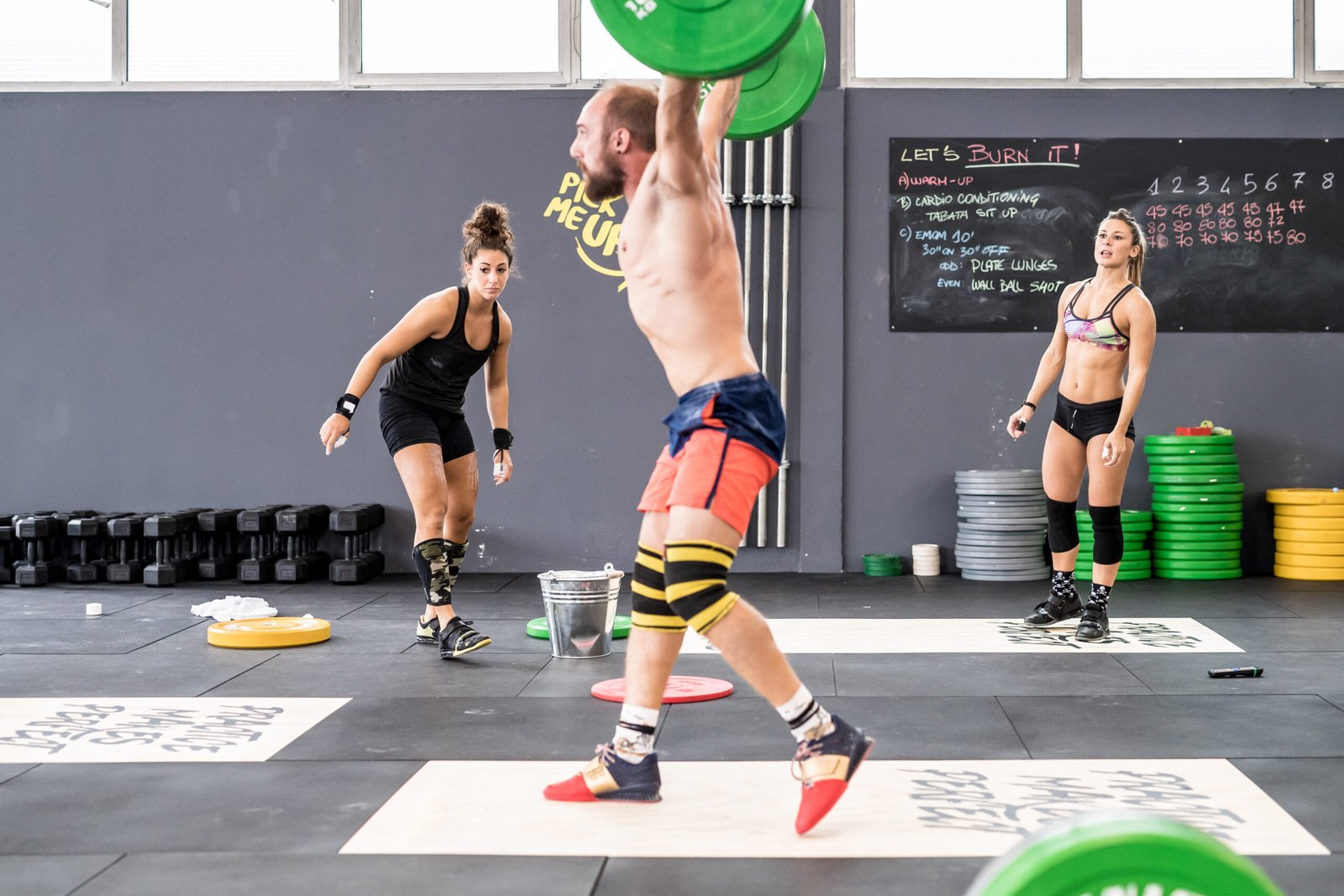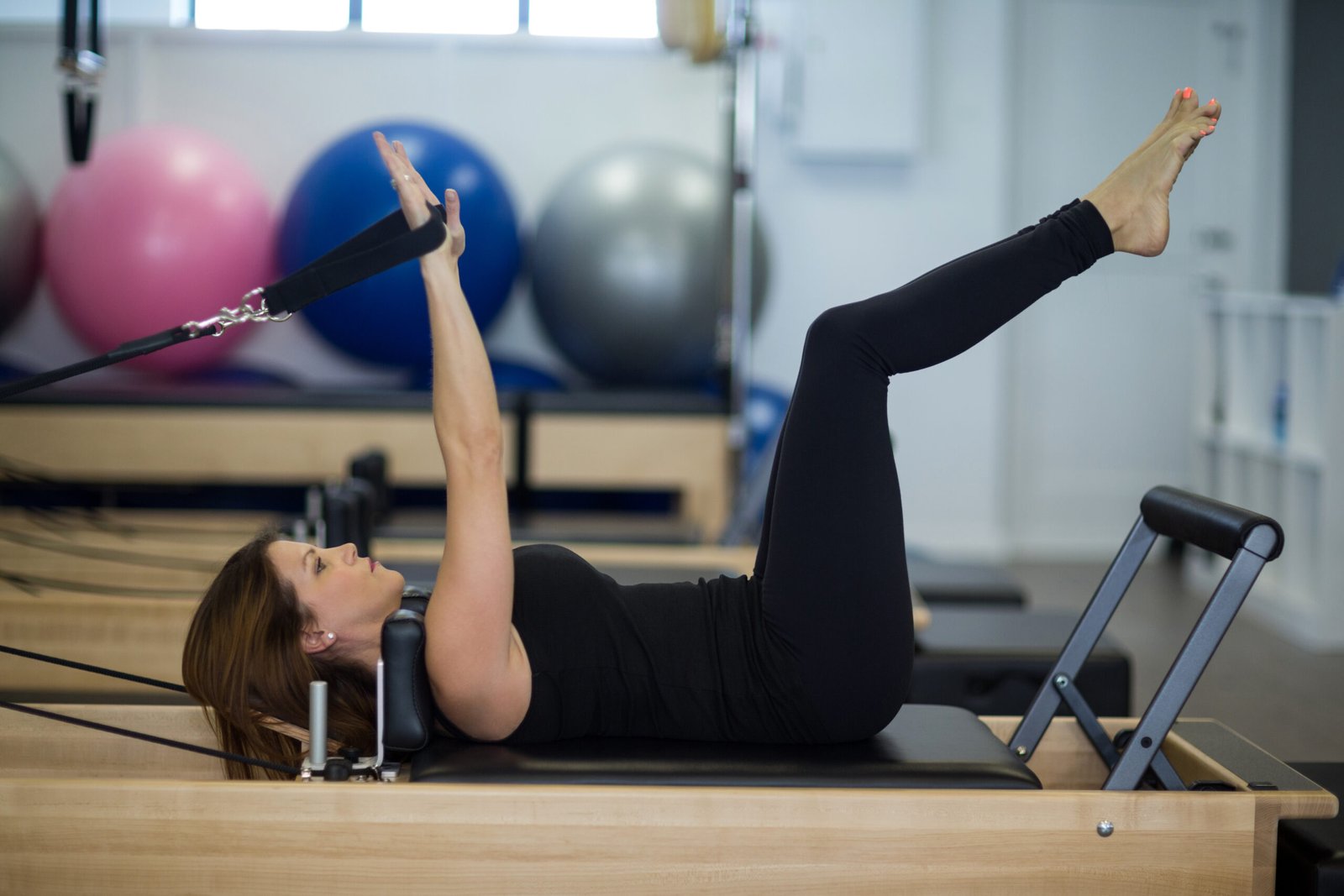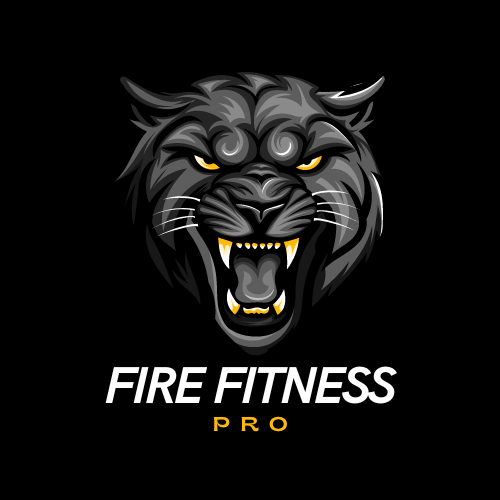In today’s fast-paced world of fitness innovation, the secrets to building formidable strength and unwavering confidence don’t lie in cutting-edge technology but in the timeless practices of our ancestors. Historical strength training techniques have sculpted warriors and athletes throughout centuries, offering a unique path to unlocking one’s inner warrior. By exploring the evolution of strength training, from ancient civilizations to modern-day practices, we uncover the enduring power of techniques that stand the test of time, promising not just physical prowess but a deeper connection to resilience and self-assurance.
The Evolution of Strength Training
| Civilization | Training Focus | Techniques Used | Notable Equipment |
|---|---|---|---|
| Ancient Greeks | Agility and Combat Readiness | Weighted javelins, discus throws, bodyweight exercises for explosive power | Javelins, Discs |
| Romans | Endurance and Discipline | Marching, push-ups, battle drills, bodyweight exercises for stamina and strength | None (Bodyweight, Armor) |
| Vikings | Raw Power and Fortitude | Stone lifting, weapon training, axe throwing, shield maneuvers | Stones, Shields |
From the dawn of civilization, strength training has played a critical role in survival, warfare, and everyday life. Ancient civilizations such as the Greeks, Romans, and Vikings developed diverse methods and tools to cultivate unmatched physical prowess. The Greeks, for instance, were renowned for their athletic competitions, with exercises designed to build strength and stamina. Romans introduced organized training regimes for their legionnaires, focusing on endurance and discipline, while Viking warriors emphasized brute strength through stone lifting and other formidable challenges. These traditional systems laid the groundwork for modern strength practices, blending seamlessly even amidst contemporary advancements. They offer unique benefits by enhancing both physical and mental resilience, as historic routines often demanded the engagement of the mind-spirit synergy in challenging scenarios. Reviving these time-tested exercises can unlock unparalleled personal empowerment and bolster confidence like never before.
– The Greeks used weighted javelins and discus throws to develop agility and combat readiness.
– Roman soldiers engaged in rigorous marching and push-up routines to enhance endurance.
– Vikings performed stone lifting exercises to build raw power and fortitude required for conquests.
Incorporating these powerful ancient techniques can transform your fitness journey, adding depth to your understanding of the body and its capabilities while instilling a sense of pride and connection to the enduring human spirit.
Ancient Strength Training: The Origins
| Culture | Key Focus | Primary Techniques | Notable Training Tools |
|---|---|---|---|
| Greeks | Endurance and Power | Feats of endurance such as stone lifting, bodyweight squats, lunges | Stones, Logs |
| Romans | Functional Strength and Agility | Battle drills, carrying armor over long distances | Armor, Sandbags |
| Chinese | Balance, Speed, and Agility | Martial arts, Tai Chi-like exercises, breathwork for endurance | None (Bodyweight) |
| Egyptians | Warrior Strength and Agility | Carrying heavy objects, lifting stones | Stones, Heavy Objects |
The origins of historical strength training techniques are deeply interwoven with the survival instincts and daily lives of early humans. Practical and functional movements formed the backbone of these techniques, emphasizing the necessity of physical resilience and agility. Ancient training often involved lifting natural objects, carrying heavy loads, and employing bodyweight exercises that were as diverse as human creativity allowed. Different cultures approached training with unique routines: Greeks excelled in feats of endurance, Egyptians embraced weight lifting for warrior training, and the Chinese integrated martial arts to build agility. These practices laid a solid foundation that continues to influence contemporary strength regimens and prove that strength principles are truly timeless. Engaging in historical strength training reconnects us with these age-old roots, offering not only physical might but also instilling a powerful sense of confidence and heritage.
– Stone lifting was an essential practice among Celtic warriors, training for combative proficiency.
– Egyptian soldiers trained by carrying heavy objects across long distances to simulate battlefield scenarios.
– Chinese warriors performed Tai Chi-like exercises to refine balance and speed.
By embracing these ancestral practices, you sharpen your physical abilities and attune your spirit to the resilience of warriors who shaped history.
Strength Training in the Middle Ages and Renaissance
| Era | Focus Area | Training Routines | Training Equipment |
|---|---|---|---|
| Knights | Combat Readiness, Core Strength | Jousting, sword drills, mock combat | Swords, Armor |
| Soldiers | Endurance, Strength, Precision | Weight lifting with logs, sword drills, combat simulation | Logs, Swords |
| Warriors | Agility and Strength | Outdoor resistance training, stone lifting | Stones, Logs, Bodyweight |
The Middle Ages and Renaissance marked an era where strength training became an integral aspect of a warrior’s preparation for battle. Rigorous routines, tailored specifically for knights and soldiers, emphasized functional strength and endurance using rudimentary equipment—wooden logs, stones, and makeshift weights. Training involved simulating combat scenarios, where knights practiced wielding weapons and wearing armor to enhance agility and resilience. Historical texts reveal an emphasis on compound movements—exercises that engaged the entire body to build comprehensive strength, a testament to their efficacy. Training settings varied, with routines carried out in outdoor landscapes that fostered adaptability and mental fortitude unknown in modern gyms.
– Knights practiced jousting, which required immense core strength and balance.
– Soldiers performed sword drills that mimicked battle, focusing on endurance and precision.
– Outdoor training harnessed natural resistance to build stamina and resilience.
By exploring these medieval techniques, one can cultivate grit and resilience, mirroring the perseverance needed for today’s challenges.
Strength Training in the Modern Era
| Aspect | Ancient Training Techniques | Modern Training Techniques |
|---|---|---|
| Primary Focus | Endurance, Agility, Functional Strength | Muscle Isolation, Aesthetic Development, Precision Strength |
| Common Equipment | Stones, Logs, Shields, Bodyweight | Dumbbells, Barbells, Machines, Resistance Bands |
| Training Routine | Full-body compound movements, simulated battle exercises | Isolated exercises, machine-based routines |
| Mental Engagement | High focus on mental resilience, adapting to harsh conditions | Emphasis on structured |
In the modern era, strength training has evolved yet remains significantly influenced by the traditions of the past. There is a noticeable fusion of ancient techniques and modern innovations, aimed at maximizing physical capabilities. These historical methods not only remain foundational but have gained recognition as integral to contemporary practices. Many timeless exercises from the annals of warrior and athlete regimes, such as squats and deadlifts, form the cornerstone of today’s fitness circuits. The resurgence of traditional strength techniques highlights their continued relevance, as they offer a potent means of enhancing both strength and self-assurance. Whether it’s lifting stones or wielding kettle bells, integrating historical practices with state-of-the-art tools paves the way for a holistic and versatile workout regimen.
– Weightlifting incorporates principles from classical stone lifting exercises.
– Calisthenics draw inspiration from ancient bodyweight exercises used by Roman soldiers.
– Kettlebell swings channel the dynamic movements found in Viking sword drills.
Adopting these enduring methods alongside modern techniques fosters an all-encompassing approach to fitness that can redefine your personal strength journey.
5 Ancient Methods For Ultimate Physical Development
Unlocking the power of ancient training techniques offers a robust foundation for modern fitness enthusiasts. Legendary warriors like the Greeks and Romans excelled by utilizing bodyweight exercises that built functional strength indispensable for their combat needs. The ancient Chinese perfected endurance routines through martial arts and disciplined breathwork. Similarly, the Indian subcontinent’s approach harnessed yoga and calisthenics to enhance flexibility and power. Viking warriors showcased primal movements and weapon-based training, achieving not only physical durability but unyielding confidence on the battlefield.
– Greek athletes focused on bodyweight squats and lunges for explosive power.
– Romans practiced battle drills with armor to simulate real combat endurance.
– Chinese monks combined meditation with martial routines for holistic conditioning.
– Indian warriors incorporated yoga postures to balance strength and agility.
– Vikings engaged in axe-throwing and shield maneuvers to sharpen combat reflexes.
Delving into these ancient practices empowers you with unrivaled strength and sheds light on the remarkable adaptability of the human body throughout history.
Movement Training

The art of Movement Training comprises developing agility, coordination, and heightened body awareness, critical elements underpinned by historical strength training. This technique spans exercises that mimic the movements of ancient warriors, elevating functional fitness and athletic prowess. Enhancing kinesthetic intelligence is the ultimate goal, equipping practitioners to execute complex, precise movements. Ancient motifs like martial arts and traditional military drills inspire this training method, focusing on dynamic, whole-body motion. Integrating Movement Training into your routine can amplify your strength, boost self-confidence, and ignite a warrior-like mindset by taking cues from time-honored practices.
– Capoeira develops rapid-foot coordination and agility, much like ancient warrior dance training.
– Bodyweight gymnastic routines reflect historical acrobatic and agility practices.
– Brazilian Jiu-Jitsu drills engage in movement mirroring tactical combat training.
Harnessing the power of movement training not only elevates your fitness regimen but instills a sense of grace and fluidity crowned with the confidence of age-old warriors.
Weighted Lever Training
Weighted Lever Training uses leverage-based tools like maces and clubs to develop phenomenal strength and stamina. This technique has its origins in ancient warrior and martial arts traditions, closely mimicking the physical exigencies of battle and daily endurance tasks. Through dynamic movements and rotational exercise, it enhances grip strength, shoulder stability, and core power. Engaging in such training enhances coordination and balance and is effective in preventing injuries, simulating the endurance and focus known in the warriors’ mindset. Employed diligently, Weighted Lever Training not only sculpts physical fortitude but conditions the mind to withstand the test of arduous trials.
– Persian ‘Meel’ (clubs) strengthened ancient warriors’ forearms and shoulders.
– Indian ‘gada’ workouts honed formidable upper body prowess and grip.
Embrace this ancient method to harness power, balance your energies, and experience the raw, authentic strength that warriors perfected through the ages.
Bearing Burdens
The practice of Bearing Burdens involves carrying hefty weights over significant distances, a time-honored method favored by warriors and laborers throughout history. This technique aimed to build functional strength and resilience, integral to surviving harsh conditions and warfare. It fortifies your core, shoulders, and legs while honing balance and coordination. Modern adaptations, like farmer’s walks and sandbag carries, have become staples in functional fitness and strongman competitions. Incorporating burden-carrying exercises into one’s routine cultivates mental fortitude, mirroring a warrior’s unswerving resilience.
– Ancient Greek hoplites carried heavy armament, training for stamina and power.
– Medieval knights bore weights akin to armor during rigorous marches.
By mastering this old-world wealth of gravity-defying practices, you’ll unearth a reservoir of strength, resilience, and tenacity to tackle all life’s challenges.
Rope Climb

The classic rope climb endurance test has stood the test of time, serving centuries of warriors and athletes as a staple for upper body growth and grip tenacity. Historically revered as a rigorous full-body conditioning tool, the rope climb demanded profound physical strength, strategic coordination, and mental resolve. By engaging numerous muscle groups, including arms, back, core, and legs, this activity provides a beneficial training challenge. Beyond the exercise’s physical merits, it also embodies the warrior spirit by reinforcing confidence and mental toughness, compelling one to ascend above daunting barriers.
– Greek athletes climbed rope to prepare for the strenuous Olympic traditions.
– Persian soldiers honed climbing prowess in preparation for sieges.
Conquering this timeless challenge can yield invaluable gains in strength and self-assuredness, linking today’s ambitions with the valor of the past.
Ancient Qigong
Rooted in Chinese tradition over 4,000 years, Ancient Qigong is a profound practice cultivating mind-body synergy and chi energy flow. Combining deliberate breathing, flowing movement, and meditation, Qigong enhances physical strength and mental clarity. Warriors and monks alike have historically leveraged Qigong to escalate their fitness, focus, and resilience levels. Its modern adoption remains pervasive for its holistic rewards—stress reduction, vitality, and enhanced concentration. Integrating Qigong into your practice provides a gateway to inner fortitude and reinforces self-confidence transcending purely physical realms.
– Warrior monks of ancient China practiced Qigong to refine their martial prowess.
– Sect members performed Qigong in synchronization to foster unity and mental focus.
By adopting Qigong, you connect intimately with ancient wisdom, harmonizing body and mind for elevated strength and tranquility.
The Modern Man Becomes the Ancient Man
| Ancient Technique | Impact on Modern Fitness | Example of Modern Exercise | Primary Benefit |
|---|---|---|---|
| Stone Lifting | Reinforces functional strength through raw, uneven resistance | Deadlifts, Squats | Builds core, grip, and full-body strength |
| Bodyweight Calisthenics | Forms the foundation for bodyweight training in modern fitness | Push-ups, Pull-ups, Squats | Enhances functional strength and agility |
| Martial Arts | Influences high-intensity training and agility drills | CrossFit, Boxing, Muay Thai | Improves coordination, balance, and endurance |
| Sandbag Training | Mimics modern functional fitness, emphasizing movement under load | Sandbag carries, Atlas stone lifting | Strengthens core, grip, and stabilizer muscles |
| Kettlebell Swings | Inspired by Viking and Russian training, focuses on dynamic power | Kettlebell swings, snatches | Develops explosiveness, hip thrust power |
| Rope Climbing | Still used for building upper body strength, grip, and coordination | Rope climbing, Battle ropes | Improves grip strength, shoulders, and endurance |
Revisiting historical strength training techniques allows the modern man to draw upon timeless methods refined by history’s fiercest warriors. These age-old regimens emphasize functional strength, fostering physical vigor transferable to daily activities and enduring resilience. Embracing practices such as stone lifting, bodyweight drills, and leveraging unconventional implements offers a diverse and impactful fitness regimen. By integrating historical methodologies with today’s fitness insights, you adopt a balanced approach, acknowledging the innate capabilities of one’s body. Witnessing this marriage of historical valor and modern science invites a profound appreciation of one’s strengths and empowers confidence parallel to that of ancient heroes.
– Lifting stones hark back to foundational training and physical diligence.
– Indigenous bodyweight movements test and enhance natural strength capacities.
Assume the mantle of the ancient with a contemporary vision, achieving a holistic strength paradigm, honoring the past while dynamically progressing forward.
What are historical strength training techniques?
| Technique | Physical Benefits | Mental Benefits | Notable Historical Uses |
|---|---|---|---|
| Stone Lifting | Enhances raw power, grip strength, and upper body endurance | Builds mental toughness and perseverance | Greek and Viking warriors |
| Bodyweight Calisthenics | Improves functional strength, flexibility, and endurance | Increases discipline and focus | Roman soldiers, Greek athletes |
| Martial Arts | Increases balance, coordination, and overall body control | Enhances mental clarity, stress management, and focus | Chinese warriors, Samurai monks |
| Sandbag Carries | Strengthens core, legs, and grip | Builds resilience and focus under physical strain | Ancient soldiers and laborers |
| Kettlebell Swings | Builds core strength, stability, and explosive power | Improves mental endurance and concentration | Russian warriors, ancient athletes |
| Rope Climbing | Strengthens upper body, grip, and coordination | Boosts mental resolve and problem-solving abilities in tough scenarios | Greek athletes, Persian soldiers |
Historical strength training techniques resonate with the tried-and-true methods archived by ancient warriors and strongmen to develop robust physical strength and endurance. These moves focus on functional motions and utilize natural objects like stones, logs, and sandbags for effectuating exercise. Emphasizing comprehensive, full-body workouts and compound exertions, they are designed to build overall power and agility, transcending the aesthetic-centric muscle development seen today. Rooted in practicality and application to real-world scenarios, these techniques inherently foster mental discipline and toughness equivalent to the indomitable spirit of historical fighters.
– Stones and logs serve as primary tools, requiring powerful, raw labor.
– Sandbags mimic resistances found in nature, testing lifting and carrying capabilities.
Take on these tried and tested methodology to strengthen body and mindset, nurturing an athletic form drawn from the ages.
How do historical strength training techniques differ from modern methods?
The contrasts between historical strength training techniques and modern methods highlight notable shifts in focus and instrumentation of exercise. Ancient methodologies thrived on functional, bodyweight-inducing activities, while their modern counterparts lean towards equipment-centric and isolated muscle exercises. Warriors of the past prioritized endurance, agility, and holistic capability, contrasting with today’s fixation on body aesthetics and hypertrophic outcomes. Conventional implements, like stones and logs, promoted natural, compounded movements while modern gyms tend to depend on machines and dumbbells. Adding to this divergence, historical training was largely intuitive, embracing environmental adaptiveness over structured and scientifically strategized workout plans seen today. Nutrition and recovery were directly tied to cultural practice and available knowledge, existing differently than today’s nutritiously calculated recovery protocols.
– Ancient emphasis on endurance contrasted with today’s pursuit of muscle bulk.
– Modern exercise delves into precise equipment, deviating from ancient implement reliance.
Realize the profound benefits of melding these practices, drawing virtue from age-tested tenacity, and tailoring it to resonate with contemporary aspirations.
What equipment was commonly used in historical strength training?
| Equipment | Ancient Training Use | Modern Equivalent | Key Differences |
|---|---|---|---|
| Stones | Used for lifting, endurance training, and strength challenges | Dumbbells, Barbells | Stones varied in size and weight, more functional than modern equipment |
| Logs | Used for carrying, lifting, and constructing upper body strength | Medicine balls, Weighted sleds | Logs offered irregular weight distribution, mimicking natural movements |
| Clubs & Maces | Used for strengthening grip, shoulders, and forearms | Kettlebells, Dumbbells | Clubs and maces are less common today, but kettlebells mimic similar movement |
| Rope | Used for climbing to enhance upper body strength and grip | Pull-up bars, Rope climbing machines | Rope climbing was done with natural ropes, modern machines allow for controlled practice |
| Sandbags | Used for carrying and lifting to build core strength and endurance | Sandbag training kits | Sandbags mimic uneven resistance but in a more structured form today |
Historical methods incorporated basic yet effective equipment, fostering immense strength developments through elements such as stones, logs, and sandbags. These tools developed both raw power and resilient character. The utilization of clubs and maces cultivated grip endurance, coordination, and upper body strength, forming a comprehensive physical foundation. Although the apparent appearance differentiates them, barbells and dumbbells trace their origins from rudimentary weights evolving into adjustable instruments we recognize today. Alongside these, the practice of rope climbing and bodyweight activities like squats and push-ups were pivotal to achieving balanced muscular competency and flexibility, representing a holistic approach to fitness.
– Heavy stones served as benchmarks for measuring pure power and resolve.
– Logs were essential for crafting robust upper body strength and motor skills.
Embrace these timeless tools to integrate the elementary might into your contemporary strength-building regimen and unlock unseen physical potential.
Can beginners safely practice historical strength training techniques today?
Engaging with the past can be an insightful journey, especially when it comes to understanding historical strength training techniques. Today, fitness aficionados and historians alike are increasingly interested in how previous generations achieved their physical prowess without modern equipment. For beginners, the key question is whether these age-old practices can be approached safely. Let’s delve deeper into how you can explore these fascinating methods while ensuring your health and well-being are protected.
Understanding Historical Techniques
Historical strength training techniques span various cultures and eras, each with unique methods tailored to the demands and resources of their time. For instance, ancient Greek athletes might have used simple stone weights, while medieval knights engaged in rigorous functional workouts using the very armor and weapons they would wield in battle. Studying these methods can offer contemporary fitness enthusiasts new insights and inspiration.
Principles of Safety
The foundational principle for beginners interested in historical training modalities is ensuring safety. Here are some guidelines:
1. Progressive Overload: Much like contemporary training, historical strength training requires gradual progression. Start with lighter weights or simplified movements and incrementally increase the intensity. This principle, while seemingly modern, has been inherently practiced by athletes across time.
2. Proper Technique: Understanding and mastering the correct form is crucial. Historical training often involves compound movements, which can be highly beneficial but also risky if performed incorrectly. Observing instructional videos or consulting with a trainer knowledgeable about these techniques can be very helpful.
3. Listen to Your Body: Unlike advanced practitioners, beginners often struggle with accurately assessing their physical limits. Taking cues from your body and understanding the difference between good exertion and potential injury is vital.
4. Balance Training: Historical methods often focused on functional strength, meaning they typically engaged multiple muscle groups and emphasized balance and flexibility. Incorporating yoga or dynamic stretching can complement these workouts and help prevent injury.
Practical Applications
Bringing historical techniques into your fitness regime doesn’t mean you will need to workout in a suit of armor or sculpt your own stone weights. Modern interpretations are available:
– Kettlebells & Clubs: Many of these tools mimic medieval weaponry but are designed for safe, efficient training. They provide a taste of historical strength challenges while ensuring safety standards are met.
– Bodyweight Movements: Many ancient warriors and athletes relied heavily on bodyweight exercises. These can be safely practiced by beginners and molded to increase in complexity over time.
Enriching Your Fitness Journey

Embracing historical strength training can add both variety and depth to your fitness routine. It not only contributes to your physical development but also connects you with a rich lineage of athletic tradition. However, always remember that safety should be your top priority. As you explore these historical techniques, stay informed, take cautious steps, and cultivate a balanced approach to strength training.
By respecting the age-old wisdom of our ancestors and blending it with contemporary understanding, beginners can safely integrate historical strength training techniques into their fitness journeys.
– Indian Clubs Practice
Beginners can safely start with light Indian clubs to enhance shoulder mobility and coordination. These exercises mimic historical routines where lightweight clubs were used for warming up and improving flexibility before using heavier equipment.
– Sandbag Lifts
Practicing lifts and carries with sandbags can be a safe entry point for beginners looking to incorporate historical strength work into their routines. Sandbags allow for scalable weight adjustments and reinforce practical strength without the rigidity of traditional weights.
– Stone Lifting
Beginners can start with relatively small stones to practice grip and posture, mimicking historical techniques where people lifted natural objects. This method is scalable, and thorough attention to form ensures safety.
– Roman Chair Exercises
The Roman Chair, a piece of equipment used historically, helps improve core strength and lower back endurance. Today, beginners can safely use modern versions of this apparatus with appropriate supervision and gradual progression.
– Kettlebell Swings
Originating from Russia in the 18th century, kettlebell exercises can safely be introduced to beginners with light weights. Focusing on proper technique can help develop functional strength and cardiovascular fitness.
– Bodyweight Calisthenics
Many historical strength routines relied heavily on bodyweight exercises like push-ups and squats. Beginners can safely use these techniques today to build foundational strength without the need for equipment.
– Rope Climbing
Despite seeming daunting, beginners can practice rope climbs by starting with low swings and practicing foot holds, emulating the rugged training techniques used by ancient warriors for upper body strength.
– Shield Training (with Mock Shields)
Practicing movements used by historical warriors who trained with shields can be safely adapted for beginners. Using lightweight, mock shields can improve endurance and coordination without risk of injury.
– Club Swinging Drills
Clubs have been used throughout history, and beginners can engage in safe practice today using lightweight replicas to enhance wrist flexibility and shoulder strength while ensuring a controlled and steady pace.
– Farmer’s Walk with Wooden Logs
Emulating the historical task-based exercise of carrying logs, beginners can start with manageable weights to improve grip strength and overall conditioning, keeping a focus on posture and balance.
Where can I learn more about historical strength training techniques?
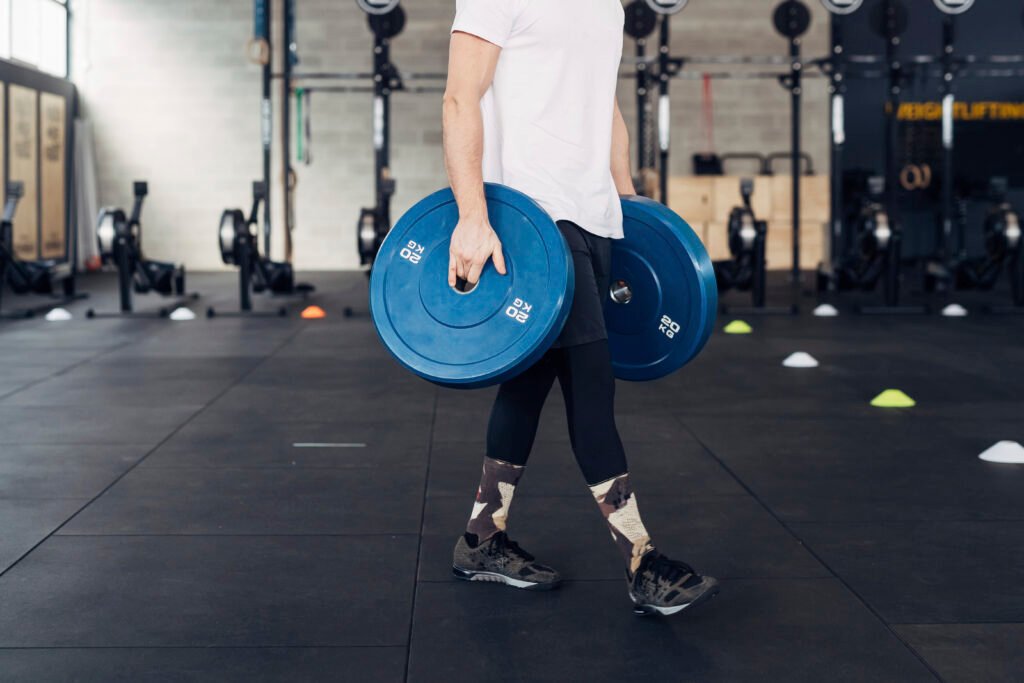
The pursuit of strength and fitness is as old as civilization itself, drawing inspiration from the robust training methods of ancient cultures. If your quest is to delve deep into these age-old strength training techniques, a myriad of resources are at your disposal to guide you on this fascinating journey. Here’s how you can unearth the secrets of historical strength training and integrate them into your modern fitness regimen:
1. Books and Literature
Literary treasures are one of the most accessible avenues to explore historical strength training. Works like “The Complete Sandow System” by Eugen Sandow or “Dinosaur Training” by Brooks D. Kubik are excellent starting points. These books provide insights into the techniques used by the strongmen of the past, illuminating the philosophies and exercises that built iconic physiques before the advent of modern gyms.
2. Scholarly Articles and Journals
For those interested in more academic perspectives, delve into historical research papers and journals. Publications like the Journal of Strength and Conditioning Research sometimes cover historical methodologies, comparing them with contemporary practices. University libraries or online databases such as JSTOR can be invaluable resources for accessing these scholarly works.
3. Online Communities and Forums
The internet is home to vibrant communities dedicated to historical strength training. Platforms like Reddit have numerous subreddits such as r/strongman that focus on traditional strength techniques. Engaging with these communities allows for knowledge exchange with like-minded enthusiasts and experts who provide advice, share personal experiences, and discuss ancient methodologies.
4. Documentaries and Video Content
Visual learners can benefit from an abundance of documentaries and online video content exploring past training regimes. YouTube channels like History Tea Time with Lindsay Holiday often dive into the daily lives and training of historical figures, while documentaries on platforms such as Netflix or Amazon Prime may cover topics on strength and training across different cultures throughout history.
5. Workshops and Training Camps
Attending workshops or training camps that focus on historical strength techniques is an interactive way to immerse oneself in the subject. Events like historical reenactments or strongman competitions often include workshops led by experts who specialize in time-honored training methods, offering an experiential learning opportunity.
6. Museums and Historical Sites
Visiting museums or historical sites dedicated to ancient cultures allows enthusiasts to gain insights directly from the sources of these training methods. Places like the National Museum of Sport in Nice, France, or the Olympia Archaeological Museum in Greece offer exhibits that can aid in understanding the historical context and evolution of strength training.
7. Collaborating with Historians and Experts
Partnering with historians or fitness experts who have a passion for antiquated training methods can provide personalized insights and mentorship. Whether through formal education or one-on-one consultations, these individuals can tailor learning experiences and provide valuable knowledge on the intricacies of ancient strength training.
In conclusion, exploring historical strength training techniques offers a fascinating glimpse into the evolution of fitness and the timeless pursuit of physical excellence. From the disciplined regimen of the ancient Greeks to the robust practices of 19th-century strongmen, these age-old methods highlight the enduring principles of strength and resilience. Incorporating these historical techniques into modern workout routines not only adds variety but also serves as a testament to their foundational effectiveness and adaptability. By understanding and appreciating the roots of strength training, fitness enthusiasts can not only diversify their approaches but also glean valuable insights into achieving sustainable and holistic health. As we continue to push the boundaries of physical prowess in the digital age, these time-tested practices remind us of the intrinsic values of dedication, balance, and innovation in the journey toward strength and well-being.









